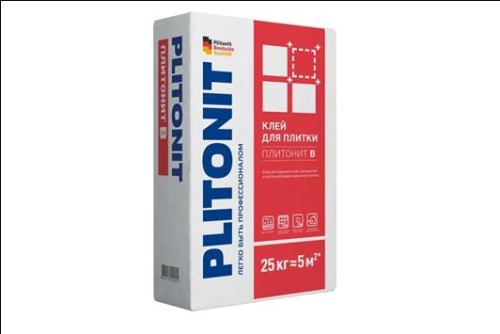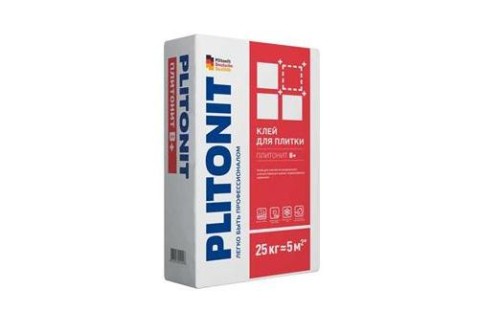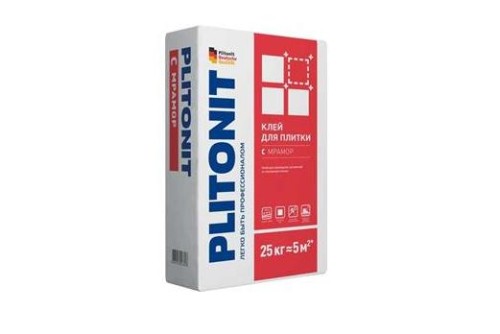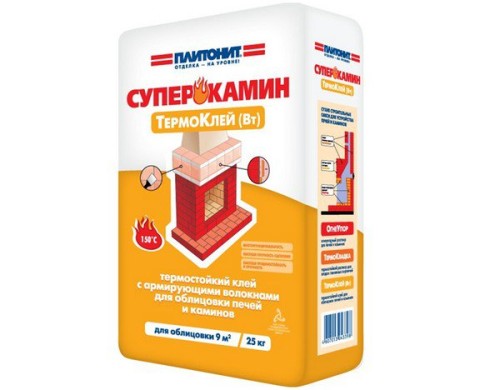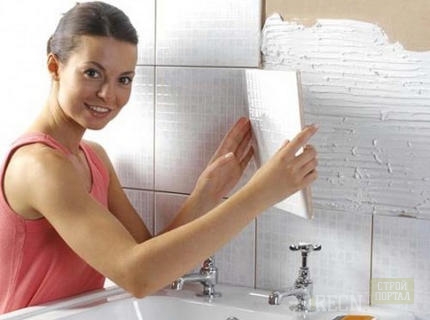
Glue Plovetonite: Material Overview, Advantages, Reviews, Use Building materials
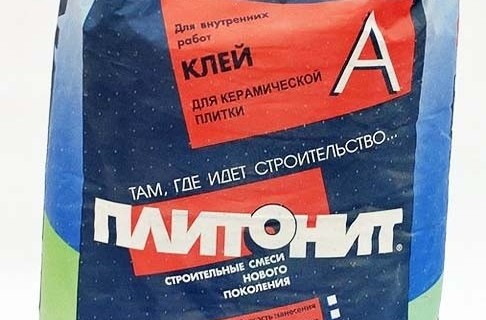
Dry plotonite mixture is a quick and easy solution to various tasks in construction. With it, you can facing fireplaces, stoves, create waterproofing, align the ceilings, walls, floor.
Content
Assortment of products Plovetonite includes putty, plaster formulations, screeds, primers, glue for tiles, grouts, additives in the mixtures of the machine.
Tile glue plyonitis: types
The products of the trading brand are classified by the resistance of the solution to the impact of moisture, be issued in several modifications.
1. Plovetony A.
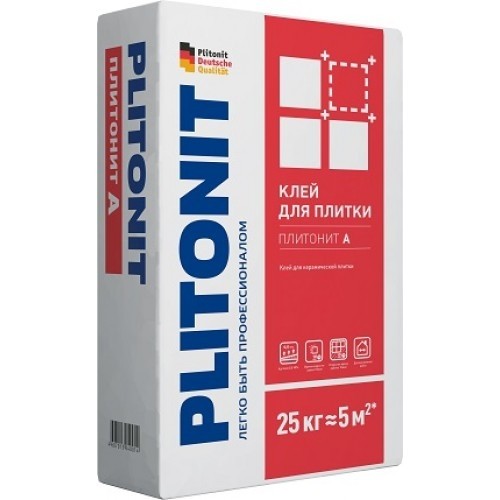
This type of adhesive is created for all types of ceramic tile with water absorption from 1%, with dimensions of no more than 30x30 cm.
2. Ploveton V.
This type of plyonite, to buy which is possible in a construction store, and also order via the Internet, applied indoors and outside.
Plovetonite (glue for tiles) A \u200b\u200band B is used for facing surfaces from reinforced concrete (R / B), concrete, brick, plaster plaster, lime-cement bases, on cement surfaces, bases made of cellular concrete.
Features of glue Toleonite A and B:
- suitable for floor facing heated;
- it can be used as a masonry solution when mounting plates and blocks from gas, foam, cellular concrete, silicate brick;
- applied in any types of rooms;
- has increased water resistance, plasticity;
- perfectly holds on the vertical surface.
3. Plovetonite in mosaic.
White tile adhesive plovetonite, created for facing the surface of the mosaic.
Specifications:
- it can be used for fixing a stone, ceramic, glass, decorative mosaic, marble small-format tile;
- has adhesion in 1MPa;
- designed for work indoors and outside.
4. Plovetonite BProfi.
Designed for cladding of the floor by any type of ceramic tiles, porcelain stoneware (up to 45x45 cm) outside and indoors. In addition, it is possible to apply the composition when installing the mosaic tiles of dark colors.
5. Plotonite BPRO.
Created for facing surfaces:
- porcelain stoneware (up to 45x45 size);
- ceramic tiles;
- mosaic tile of dark color.
General Characteristics of glue Plovetonite BPRO and BProfi:
- forms high-quality adhesion;
- easy to use;
- it is used in the process of facing the surfaces created from w / w, cellular concrete, gis plasters, bricks, drywall bases, plaster, oxide plates, and the like;
- ideal for mounting tiles on covered pools, balconies, terraces, basements;
- can be used for cladding ceilings by mosaic tiles;
- used in the system a warm floor.
6. Plovetonite in MaxiSley (thick-layer glue).
Used to clamp surfaces by any type of tile.
Specifications:
- it is used to fix the tile of the embossed form of different thickness, as well as large-format building materials;
- creates simultaneous alignment of the surface and its cladding;
- has increased adhesion, plasticity;
- recommended when creating a system warm floor;
- used when lining covered pools, bases, terraces, balconies.
7. Plovetony in +.
Created for facing surfaces by any type of tile.
Specifications:
- ideally lies on a vertical surface;
- it can be used for mounting tiles in the system warm floor, as well as pools;
- applied on a variety of surfaces;
- differs in high plasticity, frost and water resistance.
8. Stovetonit with light.
This type of tiletonite, the price of which can be clarified on the Internet, has a low flow rate, created for the facing of complex surfaces by any types of tiles.
Specifications:
- has excellent adhesion;
- in comparison with other compositions, it has 40% less consumption;
- recommended when cladding complex surfaces;
- it is easy to work with it.
9. Plovetonite with marble.
White glue, created for glass, mosaic, marble tiles.
Peculiarities:
- has increased plasticity;
- excellent adhesion;
- does not form a lime bloom;
- does not change the color of the tile;
- recommended when cladding pools, heated floors.
10. Plovetonite C.
Created for the facing of complex surfaces (cement-chipboard, bases painted with alkaline paints, lined with old tiles covered with alkali-resistant adhesives) by any type of tile.
Peculiarities:
- it is used for heated floors, pools;
- can be used as an intermediate layer when carrying out putty and plastering;
- differs in frost, waterproofing;
- it has good plasticity.
11. Plovetonite WB.
Quick-hardater building materials for all types of tiles.
Peculiarities:
- this type of adhesive is used if necessary for urgent delivery of the room;
- it has excellent clutch with the surface;
- increased frost and water resistance;
- easy to use.
12. Plovetonite-aquabarer hydroxy.
Peculiarities:
- it is used for cladding various aquatic tanks glass, porcelain, mosaic tiles, etc.;
- has increased resistance to chlorinated water;
- does not change the color of the tile;
- recommended when contacting drinking water;
- it has increased elasticity.
13. Plovetonite supercohol thermoclay (W).
Hem-resistant glue with reinforcing fibers. Created for facing of fireplaces, furnaces.
Peculiarities:
- in addition to direct purposes, it can be used as a grout, putty;
- has increased adhesion;
- polyfunctional;
- it has durability.
Wall-made pliethonite
Raw materials for the production of this type of glue serves methylcellulose.
Advantages of glue
- Ecology.
- In the process of changing the humidity, the glue adapts to the conditions of the medium, restoring the adhesion with the surface.
- It is compatible with various building materials.
- It has excellent adhesive ability.
The wallpaper adhesive plovetonite does not forms lumps when mixing with water, has antiseptic properties. It is compatible with lime, there is no smell.
Types of glue
1. Plovetonite Special.
Created for gluing heavy, dense, vinyl, convex wallpaper, photo wallpaper. Suitable for conventional building bases.
2. Plovetonite classic.
Designed for all types of paper wallpapers and ordinary building foundations.
Technological requirements when working with glue clay
- The surface should be clean, strong, dusty.
- Before applying glue, the base should be cleaned of oil, cement glue.
- When working with glue on the concrete surface, the latter should not be exposed to shrinkage.
- The glue consumption varies from 3-5 kg \u200b\u200bper 1 m2.
- All trading brand compositions are applied at a temperature of + 5 + 30 ° C.
- If the glue refers to the standard category, then after it is applied over the surface you can walk only after 24 hours.




